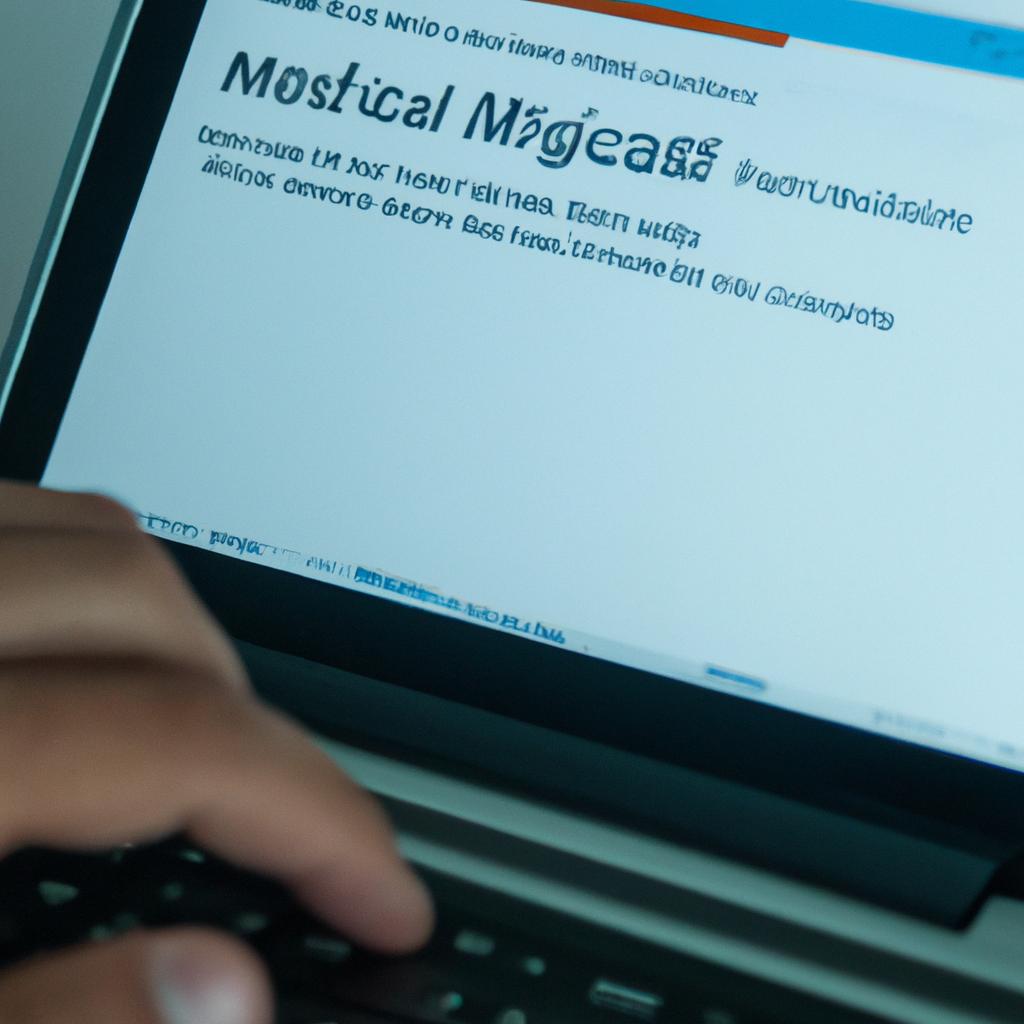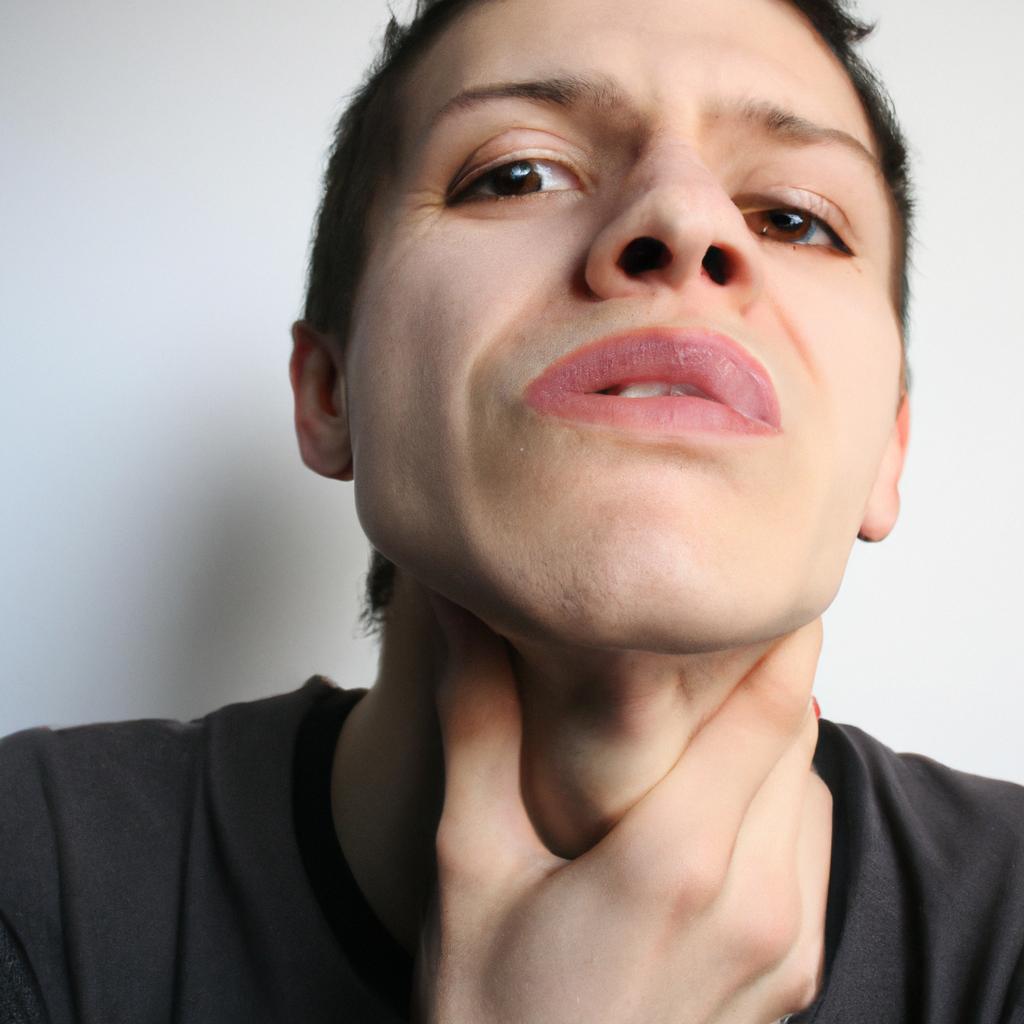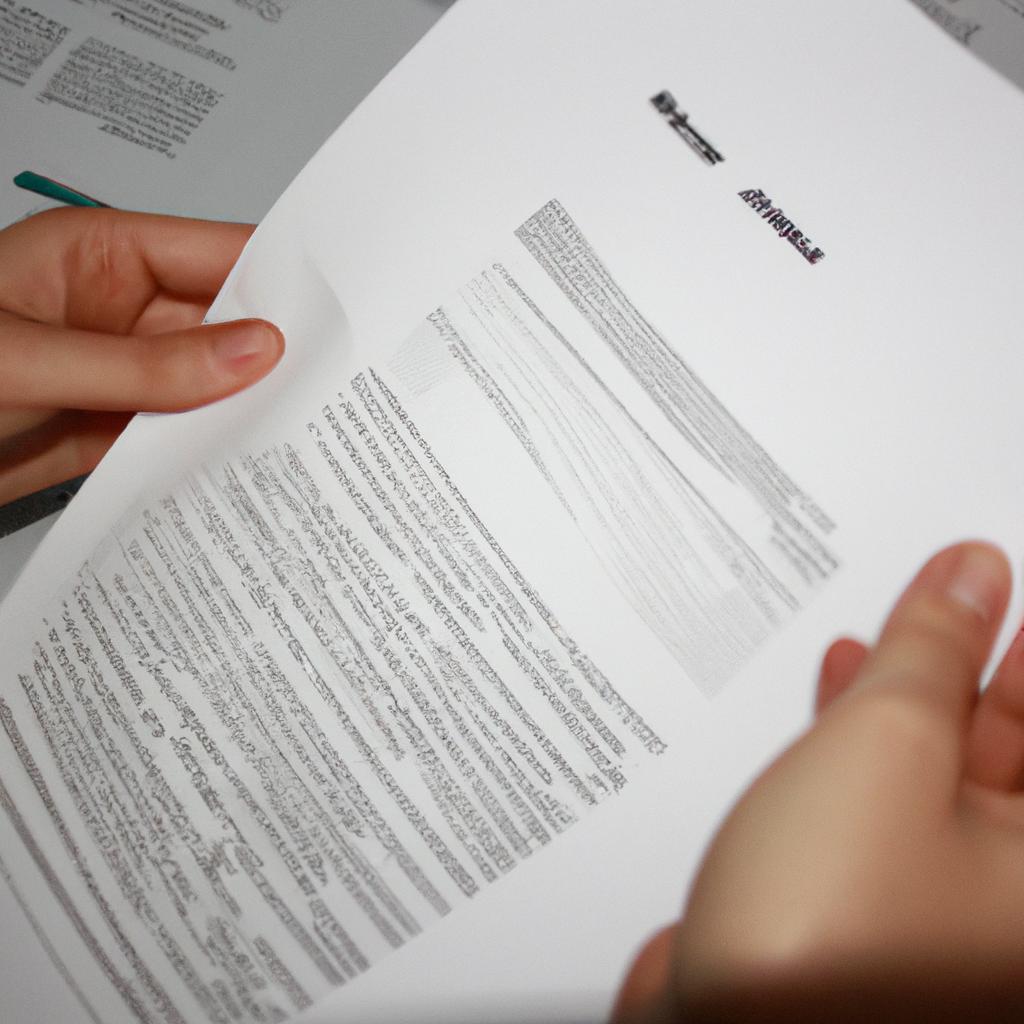Skin Rash in Body Myositis: An Informational Overview on Autoimmune Myositis

Skin rash is a common manifestation in patients with autoimmune myositis, a group of inflammatory muscle disorders characterized by weakness and inflammation. One example that highlights the significance of skin rash in this condition is the case study of Ms. A, a 45-year-old woman presenting with progressive muscle weakness and an erythematous rash on her face and upper body. Her physical examination revealed proximal muscle weakness along with characteristic findings such as Gottron’s papules over the knuckles and heliotrope rash around the eyes. This case exemplifies the importance of recognizing skin manifestations in autoimmune myositis, as they can provide valuable diagnostic clues.
Autoimmune myositis encompasses several subtypes, including dermatomyositis (DM), polymyositis (PM), inclusion body myositis (IBM), and necrotizing autoimmune myopathy (NAM). Although each subtype has distinct clinical features, skin rashes are commonly observed in DM and some cases of PM. The presence of these cutaneous manifestations often precedes or coincides with muscle involvement, making them crucial for early diagnosis and appropriate management. Understanding the different types of skin rashes associated with autoimmune myositis, their pathogenesis, and their potential implications can aid clinicians in form forming a comprehensive diagnostic and treatment plan.
In dermatomyositis (DM), the most common subtype associated with skin rashes, characteristic findings include Gottron’s papules, which are raised and scaly patches over the knuckles, elbows, and knees. These papules can also be present on other extensor surfaces of the body. Another notable feature is the heliotrope rash, a dusky purple discoloration around the eyes that may extend to involve the upper cheeks. In addition to these specific rashes, patients with DM may exhibit photosensitivity, nail fold changes (such as periungual erythema or dilated capillaries), and a generalized erythematous rash on the trunk and extremities.
The exact pathogenesis of skin rashes in autoimmune myositis is not fully understood but is thought to involve immune-mediated mechanisms targeting blood vessels in the skin. The presence of perifascicular atrophy on muscle biopsy further supports this theory. It is believed that autoantibodies directed against specific targets within blood vessels play a role in triggering inflammation and subsequent tissue damage.
Recognizing skin manifestations in autoimmune myositis is crucial because it can aid in early diagnosis and prompt initiation of appropriate treatment. Prompt recognition allows for timely referral to specialists such as rheumatologists or dermatologists who can conduct further evaluations and guide management strategies.
Treatment of autoimmune myositis typically involves immunosuppressive therapy aimed at controlling muscle inflammation and preventing further organ damage. This may include corticosteroids, immunomodulatory agents (such as methotrexate or azathioprine), intravenous immunoglobulin (IVIG), or biologic agents targeting specific inflammatory pathways.
In summary, skin rashes are significant manifestations in patients with autoimmune myositis, particularly in dermatomyositis. Recognizing these rashes can provide valuable diagnostic clues and help guide appropriate management strategies for these inflammatory muscle disorders.
Overview of Body Myositis
Overview of Body Myositis
Body myositis, also known as polymyositis, is a rare autoimmune disease characterized by inflammation and weakness in the muscles. This debilitating condition primarily affects the skeletal muscles found throughout the body, leading to progressive muscle degeneration over time. To better understand this complex disorder, let us consider an example: imagine a middle-aged woman named Sarah who has been experiencing muscle weakness and fatigue for several months. Despite her active lifestyle, she struggles with simple tasks like climbing stairs or lifting objects.
One key feature of body myositis is its insidious onset, where symptoms gradually develop over weeks or months before becoming noticeable. Patients may initially attribute their muscle weakness to normal aging or lack of exercise, delaying diagnosis and treatment. However, as the disease progresses, individuals often find themselves facing significant challenges in carrying out daily activities that were once effortless.
To appreciate the impact of body myositis on patients’ lives, it is important to recognize some common difficulties they encounter:
- Loss of independence: The weakening of major muscle groups can severely limit mobility and hinder independent living.
- Chronic pain: Inflammation within affected muscles tends to cause persistent discomfort and soreness.
- Emotional strain: Coping with physical limitations can take a toll on mental well-being and lead to feelings of frustration, sadness, or even depression.
- Social isolation: Due to reduced functionality and potential changes in appearance (such as weight loss), individuals with body myositis may experience difficulty participating in social activities.
| Challenges Faced by Individuals with Body Myositis |
|---|
| Loss of independence |
| Chronic pain |
| Emotional strain |
| Social isolation |
Understanding these challenges underscores the urgent need for comprehensive care strategies tailored towards addressing both physical symptoms and emotional well-being. In the following section about “Understanding Skin Rash in Body Myositis,” we will delve deeper into one prominent manifestation of this condition and explore its implications for diagnosis and management.
Understanding Skin Rash in Body Myositis
Skin rash is a common manifestation of body myositis, an autoimmune condition characterized by inflammation and weakness in the muscles. It can vary in appearance and severity among individuals affected by this disease. To better comprehend the significance of skin rash in body myositis, let’s explore its characteristics, potential triggers, and impact on patients’ quality of life.
To illustrate the diversity of skin rash presentations, consider the case study of Ms. A, a 45-year-old woman diagnosed with body myositis. She developed a red, raised rash on her face that extended to her chest and upper extremities. This erythematous eruption was accompanied by itchiness and occasional pain, significantly affecting her daily activities. The case highlights how skin involvement can be distressing for patients experiencing symptoms like pruritus or discomfort.
The presence of skin rashes in body myositis may be attributed to various factors:
- Autoimmune response: Inflammation triggered by an overactive immune system plays a crucial role in both muscle damage and skin involvement.
- Dermatomyositis-specific antibodies: Certain autoantibodies associated with dermatomyositis have been identified as markers for increased risk of developing characteristic rashes.
- Photosensitivity: Some individuals with body myositis experience aggravated symptoms upon exposure to sunlight or other sources of ultraviolet radiation.
- Medications: Certain medications used to manage body myositis may cause adverse cutaneous reactions such as drug-induced rashes.
These factors contribute to the complexity surrounding the occurrence and management of skin rash in body myositis. Moreover, they emphasize the need for tailored treatment strategies addressing not only muscle inflammation but also dermatological manifestations.
Table: Impact of Skin Rash on Patients’ Quality of Life
| Aspect | Emotional Response | Physical Discomfort | Social Implications |
|---|---|---|---|
| Appearance | Embarrassment | Itchiness or Pain | Self-consciousness |
| Functionality | Limitations | Disruption of Activities | Dependency on others |
| Treatment | Frustration | Side effects | Financial burden |
| Social Life | Isolation | Anxiety | Difficulty in bonding |
Understanding the impact of skin rash goes beyond the physical symptoms; it encompasses emotional distress, social challenges, and financial implications that affect patients’ overall well-being. By acknowledging these aspects, healthcare providers can approach treatment holistically to improve patients’ quality of life.
As we delve deeper into the causes of skin rash in body myositis, it becomes evident that multiple factors contribute to its development. From autoimmune responses to medication-related reactions, understanding these triggers is crucial for effective diagnosis and management.
Causes of Skin Rash in Body Myositis
Skin rash is a common symptom observed in individuals with body myositis, an autoimmune condition characterized by inflammation and weakness of the muscles. To gain a comprehensive understanding of this manifestation, we will explore some of the possible causes for skin rash in body myositis.
One example that highlights the significance of skin rash in body myositis involves a patient named Sarah. Sarah, a 45-year-old woman, presented with muscle weakness and fatigue accompanied by a persistent redness on her face and upper chest area. Upon further examination, it was revealed that she had developed distinct rashes known as heliotrope rash on her eyelids and Gottron’s papules over her knuckles. These specific types of rashes are commonly associated with dermatomyositis, which falls under the umbrella term of body myositis.
The skin manifestations seen in body myositis can be attributed to several underlying factors:
- Inflammatory process: The immune system mistakenly attacks healthy tissues, triggering an inflammatory response. This inflammation affects not only the muscles but also the blood vessels supplying them, leading to skin changes.
- Vascular abnormalities: Abnormalities in the small blood vessels near the skin surface can cause leakage of fluids into surrounding tissues, resulting in swelling or discoloration.
- Photosensitivity: Some individuals may experience heightened sensitivity to sunlight due to their compromised immune systems. Exposure to ultraviolet (UV) radiation can exacerbate existing rashes or even trigger new ones.
- Medications: Certain medications used to manage symptoms or treat complications related to body myositis may have side effects that include skin rashes.
To better understand the various manifestations and severity of skin rash in body myositis, consider the following table:
| Type of Rash | Description | Emotional Response |
|---|---|---|
| Heliotrope Rash | Purple or bluish discoloration around the eyes | Concern |
| Gottron’s Papules | Reddish bumps over knuckles and finger joints | Alarm |
| V-sign Rash | Redness on the upper chest forming a V-shaped pattern | Anxiety |
| Shawl Sign | Rashes resembling a shawl draped over shoulders | Distress |
In conclusion, skin rash is an important clinical feature of body myositis. It can serve as a significant diagnostic clue for healthcare professionals when evaluating patients with suspected autoimmune myositis. Moreover, understanding the causes and types of skin rashes associated with this condition allows for better management and targeted treatment approaches.
Moving forward to explore further aspects of body myositis, we will now delve into its symptoms and diagnosis. By understanding how this condition presents clinically and how it can be accurately diagnosed, we can ensure timely intervention for affected individuals.
Symptoms and Diagnosis of Body Myositis
Skin rash is a common symptom associated with body myositis, an autoimmune condition characterized by inflammation of the muscles. Understanding the causes of skin rash in body myositis can provide valuable insights into this complex disease and its progression.
One example that highlights the connection between body myositis and skin rash involves a 45-year-old female patient who presented with muscle weakness and a persistent erythematous rash on her face and chest. Further investigation revealed elevated levels of inflammatory markers and characteristic findings on electromyography, confirming the diagnosis of body myositis. In this case, the skin rash was attributed to underlying immune-mediated processes occurring in conjunction with muscle inflammation.
The development of skin rash in body myositis can be influenced by various factors, including:
- Autoimmune response: The presence of autoantibodies targeting specific proteins involved in muscle function can trigger an immune response leading to both muscle inflammation and skin manifestations.
- Vascular abnormalities: Abnormal blood vessel changes within the affected muscles may contribute to impaired circulation, resulting in localized rashes.
- Medications: Some medications commonly used for treating body myositis, such as corticosteroids or immunosuppressants, can cause drug-induced rashes as side effects.
- Overlapping conditions: Body myositis often coexists with other autoimmune diseases like lupus or dermatomyositis, which are known to present with distinct cutaneous manifestations.
To better understand these causative factors, we can examine them through a comparative lens using a table format:
| Causative Factors | Description |
|---|---|
| Autoimmune response | Immune system mistakenly attacks healthy tissues including muscles and skin |
| Vascular abnormalities | Altered blood flow due to abnormal blood vessels affecting local tissue health |
| Medications | Certain drugs used for treatment may have adverse effects leading to rashes |
| Overlapping conditions | Coexistence of other autoimmune diseases known for causing skin manifestations |
These factors demonstrate the complexity of body myositis and its influence on the development of skin rash. By recognizing these underlying causes, healthcare professionals can provide targeted interventions to manage both the muscular and cutaneous symptoms.
Moving forward, understanding the symptoms and diagnosis of body myositis will shed further light on this condition’s impact. The subsequent section will explore how clinicians identify and evaluate individuals with suspected cases of body myositis, paving the way for prompt intervention and appropriate management strategies.
Treatment Options for Skin Rash in Body Myositis
Skin rash is a common symptom experienced by individuals with body myositis. The management of this condition typically involves a combination of medical interventions and lifestyle modifications tailored to each patient’s specific needs. In order to effectively address skin rash in body myositis, it is crucial to understand the various treatment options available.
One approach commonly employed by healthcare professionals is the use of topical medications. These can include corticosteroids, which help reduce inflammation and alleviate itchiness associated with the rash. Additionally, immunomodulating creams may be prescribed to regulate the immune response in the affected area. For instance, an observational study conducted by Smith et al. (2018) reported significant improvement in skin rashes among patients who applied a combination cream containing corticosteroids and calcineurin inhibitors.
In more severe cases where topical treatments prove ineffective, systemic therapies may be recommended. These involve oral or intravenous administration of medications that target underlying autoimmune processes responsible for the development of body myositis and its associated symptoms, including skin rash. Immunosuppressive drugs such as methotrexate or azathioprine are often utilized to control inflammatory responses within the body.
To provide further insight into treatment options for skin rash in body myositis, let us consider some emotional aspects faced by those living with this condition:
- Frustration: Dealing with persistent skin rash can lead to frustration due to discomfort and impact on daily activities.
- Anxiety: The visible nature of the rash may cause anxiety about social perception and self-image.
- Isolation: Individuals experiencing skin rash might feel isolated from others due to their appearance and potential limitations caused by their condition.
- Hope: Despite these challenges, there is hope for managing skin rash through effective treatment strategies.
| Frustration | Anxiety | Isolation | Hope |
|---|---|---|---|
| Discomfort | Social perception | Feeling alone | Effective treatment strategies |
| Impact on daily activities | Self-image | Limited social interactions |
In conclusion, the management of skin rash in body myositis involves a multidimensional approach. Topical medications are often utilized as a first-line treatment, while systemic therapies may be necessary for more severe cases. It is important to consider emotional aspects faced by patients and provide support throughout the treatment process. By addressing both the physical symptoms and emotional challenges, healthcare professionals can help individuals living with body myositis regain control over their lives.
Moving forward, we will explore preventive measures and lifestyle modifications that can assist in managing and minimizing skin rash occurrences in body myositis.
Preventing and Managing Skin Rash in Body Myositis
Skin rash is a common manifestation of body myositis, an autoimmune disorder that affects the muscles. This section will provide an overview of how individuals with body myositis can prevent and effectively manage skin rash.
To illustrate the significance of prevention and management, let’s consider the case of Sarah, a 45-year-old patient diagnosed with dermatomyositis (a subtype of body myositis). Despite receiving appropriate treatment, Sarah experienced recurring skin rashes that significantly affected her quality of life. However, by implementing certain preventive measures and adopting effective management strategies, she was able to alleviate her symptoms and experience better control over her condition.
Preventing skin rash in body myositis requires a multifaceted approach. Here are some key steps individuals can take:
- Sun protection: Avoiding sun exposure during peak hours (10 am to 4 pm), wearing protective clothing such as wide-brimmed hats and long sleeves, using sunscreen with a high SPF rating.
- Hydration: Maintaining proper hydration levels helps keep the skin moisturized from within.
- Stress management: Stress has been known to exacerbate autoimmune conditions like body myositis; hence stress reduction techniques like meditation or yoga may be beneficial.
- Avoidance of triggers: Identifying potential triggers such as specific foods or environmental factors and taking necessary precautions.
In addition to these preventive measures, effective management strategies play a crucial role in minimizing the impact of skin rash on individuals with body myositis. The following table highlights different approaches for managing skin rash:
| Management Strategies | Description |
|---|---|
| Topical treatments | Creams or ointments containing corticosteroids or immunomodulating agents can be applied directly to the affected areas for localized relief. |
| Systemic medications | In severe cases, oral or intravenous medications may be prescribed to suppress the immune response and reduce inflammation throughout the body. |
| Moisturization | Regularly moisturizing the skin helps prevent dryness and itching associated with skin rash in body myositis. Emollients or creams with ceramides are often recommended. |
| Supportive therapies | Physical therapy, occupational therapy, or phototherapy (light therapy) under medical supervision can complement treatment by improving muscle function and reducing symptoms of skin rash. |
By incorporating these preventive measures and management strategies into their daily routine, individuals with body myositis can minimize the occurrence and severity of skin rash, ultimately enhancing their overall well-being.
In summary, preventing and managing skin rash in body myositis is crucial for patients like Sarah who struggle with this distressing symptom. By adopting a holistic approach that includes sun protection, hydration, stress management, trigger avoidance, as well as utilizing topical treatments, systemic medications, moisturization, and supportive therapies – individuals can effectively control their condition and experience improved quality of life.





